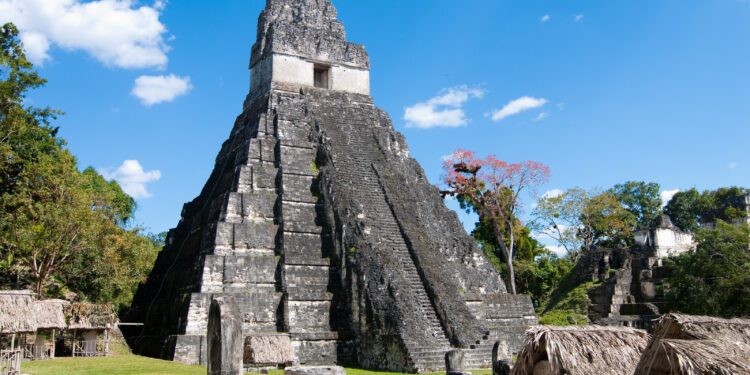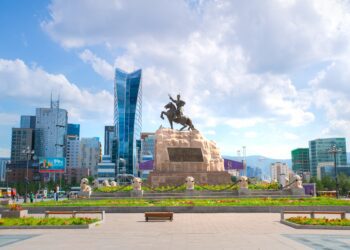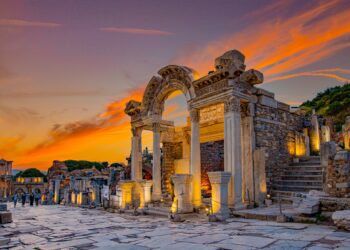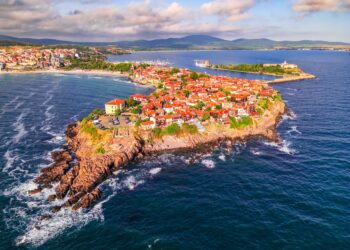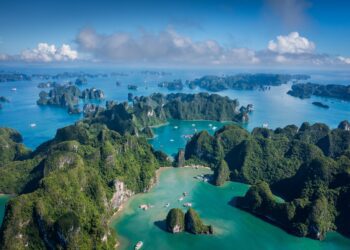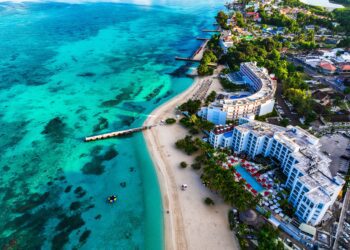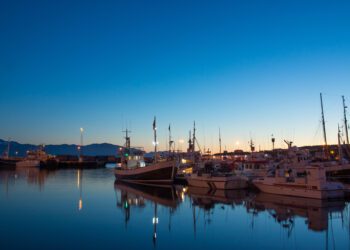One of the largest Maya archaeological site in all of Mesoamerica, in the Peten area of Guatemala, the ancient Maya city of Tikal, surrounded by a thick tropical jungle, is part of Tikal National Park.
A UNESCO Heritage Site, Tikal National Park is one of the few in the world designated for both its natural and cultural importance, for the incredible biodiversity of the surrounding forest and the archaeological significance of the ancient city.
Historic Background
The ancient city of Tikal was once the capital of one of the most powerful kingdoms of the ancient Maya, one of the largest in Mesoamerica.
While Tikal was not the only large urban cluster of the Ancient Maya, it was one of the first. It also remained one of the largest throughout its history, even as other large city-states like Calakmul, Caracol, and many others raised to power in the vicinity.
Tikal started as a smaller settlement during the Preclassic period of the Maya civilization, with some of its monumental structures dating back as early as the 400 – 300 BC. During the Classic (200-650 AD) and Late Classic period (650-900 AD), it grew into a superpower. During its peak, ancient Tikal was the political, economical, and military center of the Maya civilization, with a population around 70,000 – 100,000 people.
Like most of the ancient Maya cities, Tikal crumbled around 900 AD. Most evidence suggests the reason for this was a long-lasting drought, exacerbated by deforestation, building too many monumental structures, and overuse of water and other natural resources by the elite. The last stone stelae in Tikal dates from 869 AD.
The ancient Maya population left the monumental cities like Tikal and returned to a simpler living. The surrounding jungle slowly reclaimed the ancient structures.
The Site’s Name
The name “Tikal” comes from the Maya word Ti ak’al, meaning “at the water hole.” However, this was not the original name of the ancient Maya city.
Epigraphers deciphered the ancient city’s emblem glyph as Mutul, adding that in classic times Tikal was most likely named Yax Mutul, meaning First Mutul.
The ancient ruins are in a large nature preserve, which means you will still walk through jungle paths from one site to another. After walking along a path past the main entrance, you have a choice to make.
Can You Visit Tikal in one day?
It is possible to visit Tikal in one day, if you are in a rush and you only want to see the highlights. Or, if you start early and stay until closing time, and you are a fast walker, you can see just about everything in one day.
However, I would not recommend it. For the best experience, take three, or at least two days for the full visit.
It took us two full days to explore the ruins, both days spending from opening to closing time in the park, plus another day to visit the museums, to feel like we could walk away.
Which means, you should buy two tickets for the ruins per person for two consecutive days, and buy another ticket for the museum for the next day.
What is the best time to visit Tikal?
We visited Tikal in February, which is one of the best times to do it, since it is the cool and dry season.
Considering that Tikal is in a tropical jungle setting, weather is a primary factor for timing your trip. As I mentioned earlier, our winter, from November through February, is the best weather there. Even March is comfortable.
By midday it gets hotter, no matter the season. We used this time to find a shaded spot to sit for a midday snack, but we also found that if we avoided climbing pyramids at this time of the day, we didn’t have a problem walking in the shade.
However, it is most likely different in April and May, the hottest months in and around Tikal. With the added to humidity, makes it uncomfortable to be outdoors, especially walking and climbing.
It is most likely even worse in the summer, during the wet season, when you can expect rain every day – and the rain is the best part of the day.

